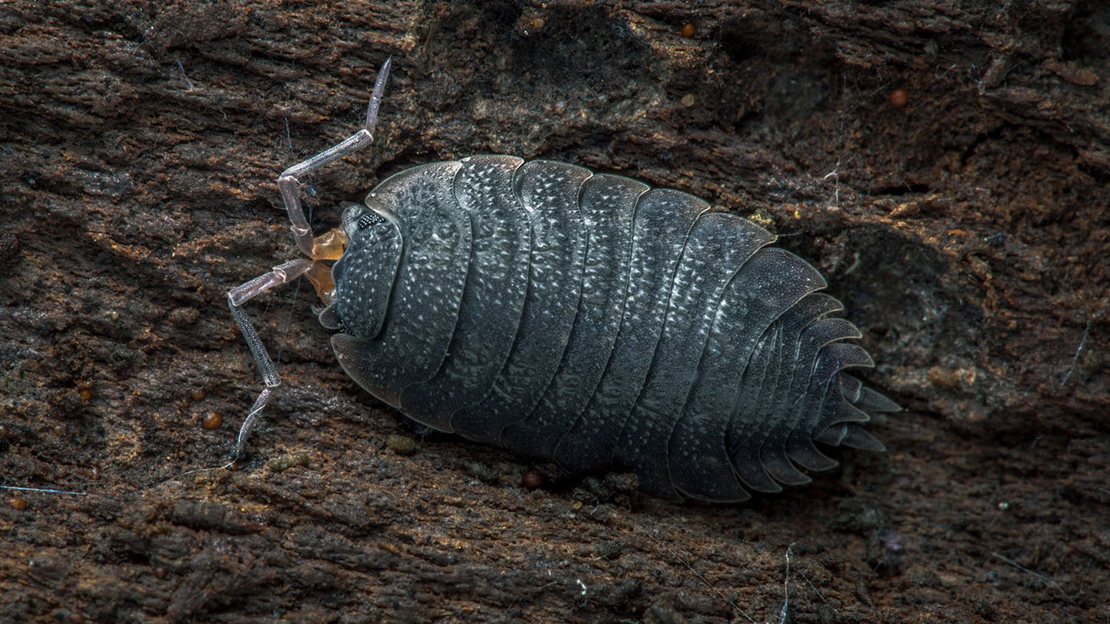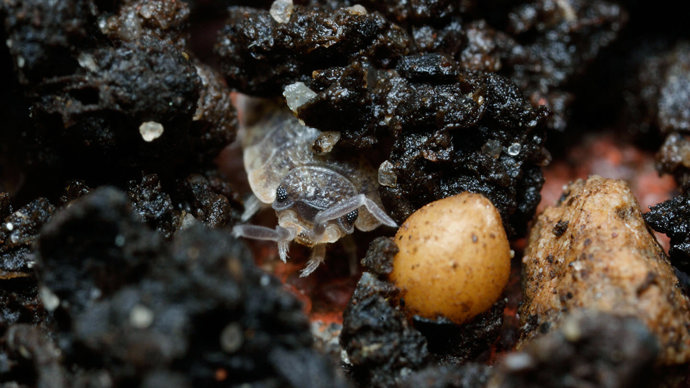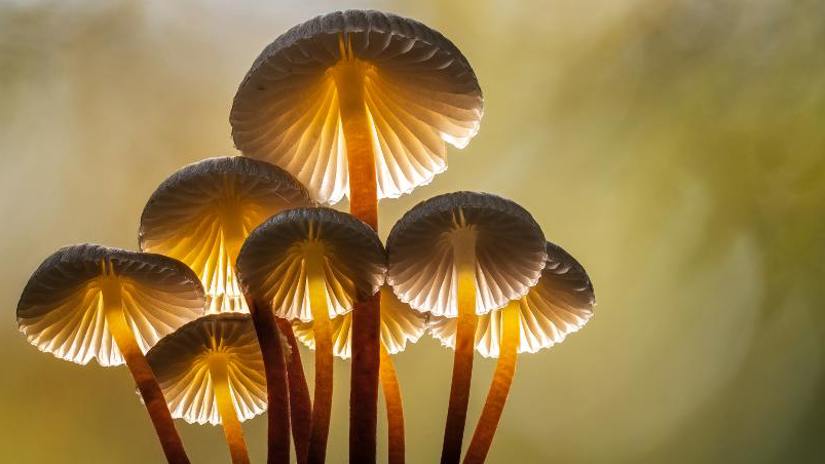Common name(s): common rough woodlouse
Scientific name: Porcellio scaber
Family: crustaceans
Habitat: almost anywhere dark and damp
Predators: spiders, birds, reptiles, amphibians
Origin: native
Hardy, hungry, excellent composters. The humble woodlouse munches its way through just about anything it can find and is an expert in recycling nutrients.
Common name(s): common rough woodlouse
Scientific name: Porcellio scaber
Family: crustaceans
Habitat: almost anywhere dark and damp
Predators: spiders, birds, reptiles, amphibians
Origin: native
These woodlice are oval shaped with light grey dimpled exoskeletons. Their bodies are made of seven segments with a pair of legs per segment. The young are small and white.
Length: 1.5 centimetres
The common rough woodlouse is not picky. It eats deadwood, leaf litter, dead animals, fungi, fruit and even its own faeces.

Female woodlice carry their eggs on their underside. When the eggs hatch, the juveniles stay with their mother for a few months until they mature.
Each female can have up to three clutches of between 12 and 36 eggs per year.
Woodlice don’t wee, they release ammonia gas instead. This means they can smell quite bad in groups, earning them local names like ‘stinky pigs’.
The common woodlouse is abundant and widespread in the UK.

Credit: Antje Schulte / Alamy Stock Photo
Woodlice look for food at night and hide in rotting wood and under rocks during the day. Gently lift stones in woods and gardens to see if there are any woodlice hiding underneath.
They stay in cool places because they are very prone to drying out.
The common rough woodlouse is not currently considered under threat in the UK.


Dead and decaying wood is one of any woodland's most important microhabitats. Learn more about why we need more of it, as well as the rare and endangered beetles, colourful fungi and other threatened wildlife that relies on it.